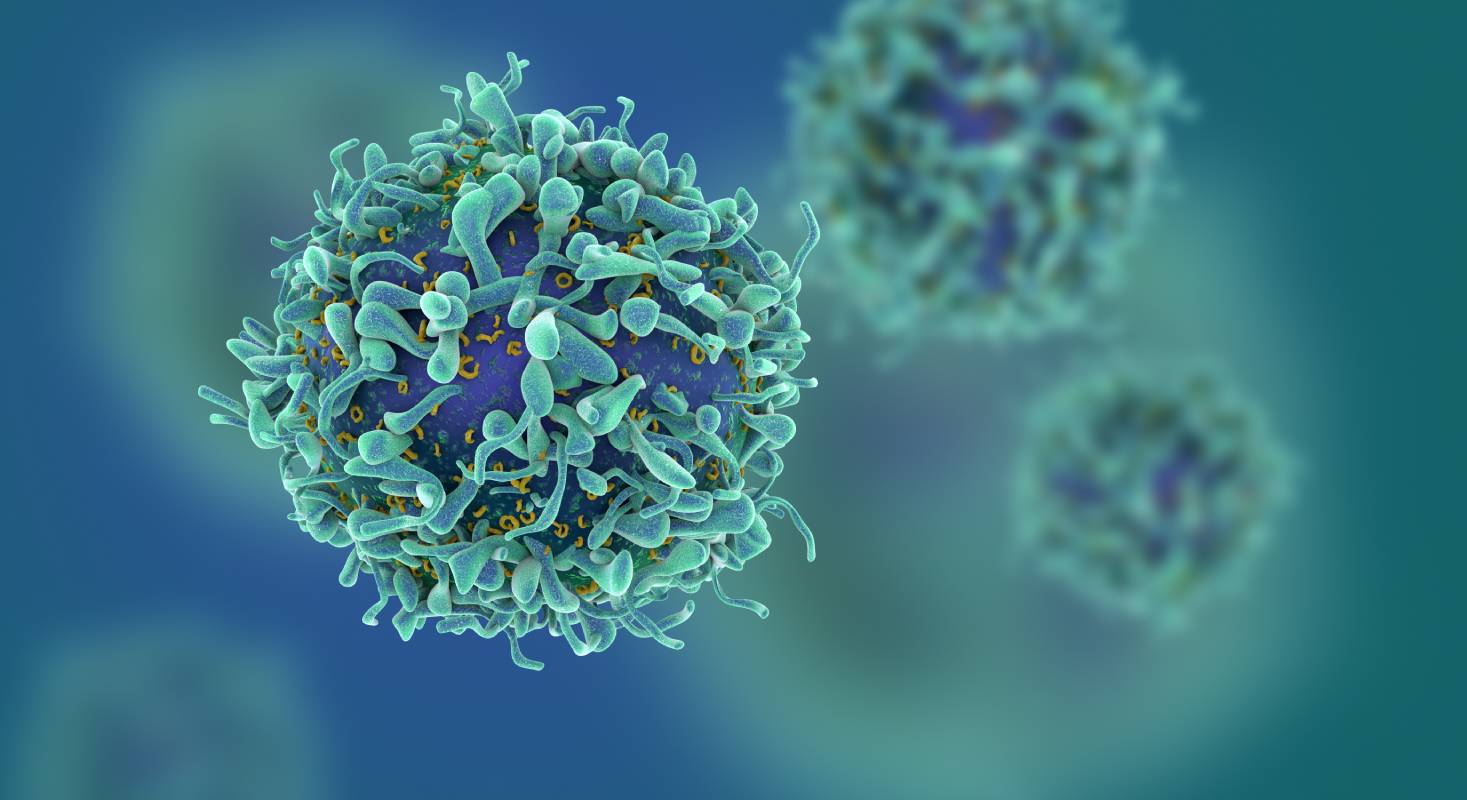In 2018, the United States alone documented 1,700,000 new cancer cases and over half a million deaths from cancer 1. Since cancer cells evade the immune system, immunotherapy, by directly sabotaging the underlying mechanisms of immune tolerance, has emerged as a key player in cancer treatment, alongside conventional radiation and chemotherapy treatments 2. Immunotherapy regimens take on many different independent or complementary forms.
Immune checkpoints are a normal part of a healthy immune system, preventing its response from growing too strong. By thwarting such immune checkpoints, immune checkpoint inhibitors allow immune cells to attack cancerous cells more vigorously.
Leukocytic T cells are critical to orchestrating the immune system’s targeted attack on cancer cells. In T-cell transfer therapy, a patient’s immune cells are collected from the tumor, after which the cells that are found to be most virulently active against the cancer are extracted out, altered, grown in large numbers, and intravenously infused back into the patient. With research continuing to highlight the importance of T lymphocyte regulation in the combat against cancer, T-cell transfer therapy remains an ongoing focus area of immunotherapy 3.
Monoclonal antibodies are laboratory-engineered immune system proteins designed to bind specific targets on cancer cells. Some of these tag cancer cells in such a way that the immune system will better identify and destroy them. For example, the monoclonal antibody drug rituximab binds the CD20 protein on B cells to trigger cell death and is used to treat white blood cell cancers 4.
Cancer vaccines enhance an immune system’s response to cancer cells in a similar manner as traditional vaccines. These can be used to prevent the development of cancer or treat an existing cancer. In 1981, the hepatitis B vaccine against liver cancer became the first Food and Drug Administration-approved prophylactic cancer vaccine 5.
Immunotherapy treatments are delivered via an intravenous, oral, topical, or intravesical route. The duration and frequency of treatment depend on the type of cancer, its stage, the type of immunotherapy, and the body’s responses to treatment. Indeed, nefarious side effects are not uncommon, as a hyperactivated immune system may accidentally indiscriminately attack healthy cells and tissues 6.
Over 400 clinical trials are underway in the U.S. assessing different immunotherapies. National Cancer Institute (NCI)-sponsored trials can be accessed directly via their online database to this end 7.
A number of particularly breakthrough immunotherapy options are also under investigation. Nanomedicines and nanoparticulate macromolecule delivery for example, can help the immune system target cancer cells with a heightened degree of specificity, resulting in safer immunotherapy by reducing unwanted immunogenicity 8. In addition, research continues to actively investigate the fields of autoimmunity, personalized vaccines, the microbiome, and metabolomics in order to address the limitations of checkpoint immunotherapies 9. Finally, researchers are increasingly focusing on the tumor microenvironment, including tumor histology, molecular subtype, and genetic heterogeneity, alongside lymphoid structure formation, fibroblast clustering, and myeloid cell polarization patterns. Such a detailed immune and molecular profile helps predict a patient’s immunotherapeutic responses with greater specificity 10.
An area of active research, immunotherapy continues to present tremendous potential, swiftly evolving to integrate the newest insights available from this era of precision medicine.
References
1. Cancer Data and Statistics | CDC. Available at: https://www.cdc.gov/cancer/dcpc/data/index.htm.
2. Hoteit, M. et al. Cancer immunotherapy: A comprehensive appraisal of its modes of application (Review). Oncology Letters (2021). doi:10.3892/ol.2021.12916
3. Waldman, A. D., Fritz, J. M. & Lenardo, M. J. A guide to cancer immunotherapy: from T cell basic science to clinical practice. Nature Reviews Immunology (2020). doi:10.1038/s41577-020-0306-5
4. Monoclonal Antibodies – National Cancer Institute. Available at: https://www.cancer.gov/about-cancer/treatment/types/immunotherapy/monoclonal-antibodies.
5. Four vaccines used to help treat or prevent cancer | CTCA. Available at: https://www.cancercenter.com/community/blog/2020/07/four-cancer-vaccines.
6. Immunotherapy for Cancer – National Cancer Institute. Available at: https://www.cancer.gov/about-cancer/treatment/types/immunotherapy.
7. Find NCI-Supported Clinical Trials – National Cancer Institute. Available at: https://www.cancer.gov/about-cancer/treatment/clinical-trials/search.
8. Akkın, S., Varan, G. & Bilensoy, E. A review on cancer immunotherapy and applications of nanotechnology to chemoimmunotherapy of different cancers. Molecules (2021). doi:10.3390/molecules26113382
9. Esfahani, K. et al. A review of cancer immunotherapy: From the past, to the present, to the future. Curr. Oncol. (2020). doi:10.3747/co.27.5223
10. Wang, S., Xie, K. & Liu, T. Cancer Immunotherapies: From Efficacy to Resistance Mechanisms – Not Only Checkpoint Matters. Frontiers in Immunology (2021). doi:10.3389/fimmu.2021.690112


